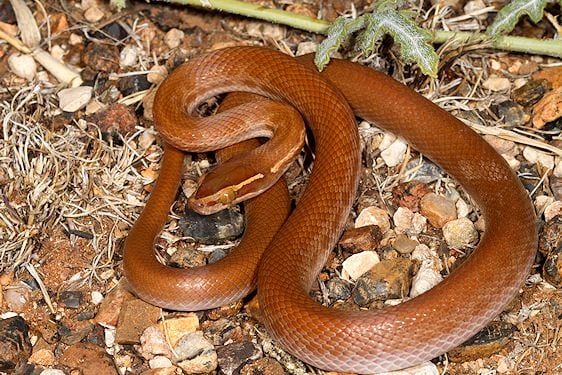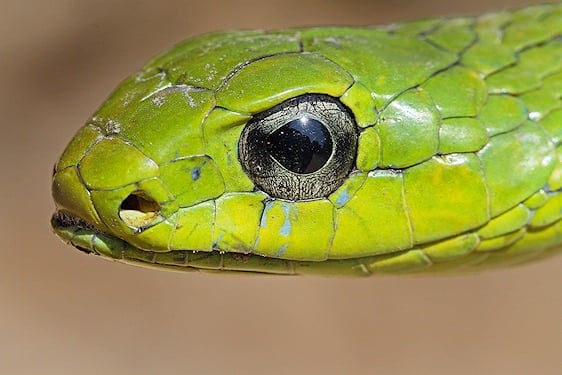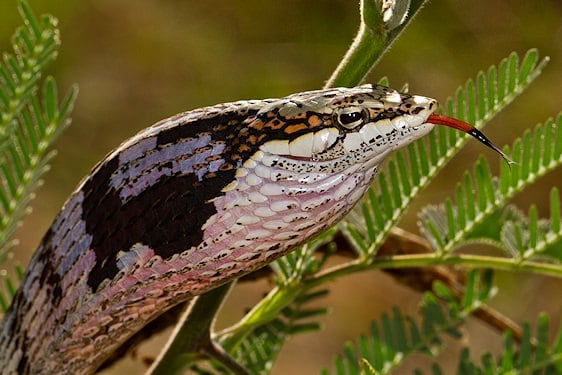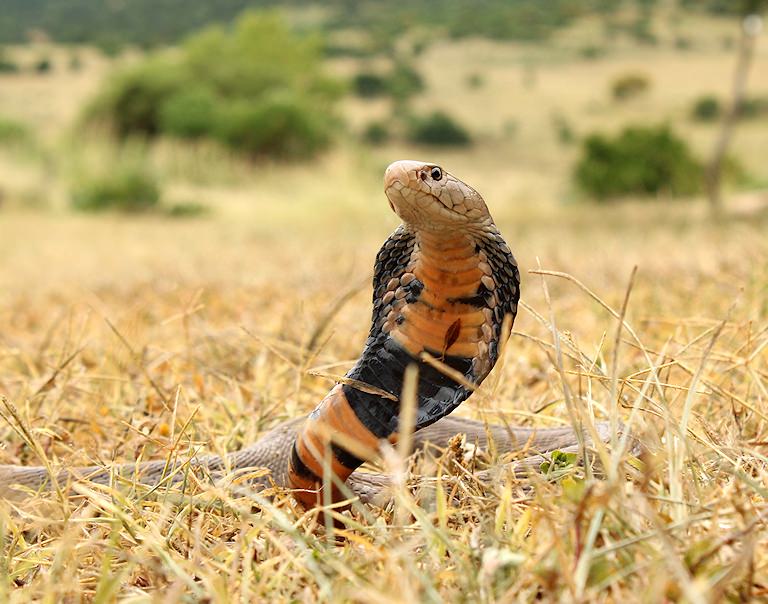Along with its awe-inspiring mammal population, if you keep your eyes to ground (or the trees!) when enjoying a safari in the Kruger National Park, you may encounter its more slithery, scaled inhabitants. Of the park’s 114 reptile species, 54 are snakes.
Need Advice?Fortunately, only nine of these are deadly poisonous, and dangerous encounters can be avoided by remaining cautious. Should you walk around the camp at night, remember to wear a sturdy pair of shoes and take a flashlight. Inside your unit, keep your open luggage and shoes off the floor and check them (carefully) before use.

The African rock python (Python sebae) is the largest snake on the continent, with significant specimens approaching or exceeding 6m (20 ft). This non-venomous snake kills its prey by constricting its heavily muscled coils. Death is usually caused by cardiac arrest rather than asphyxiation or crushing. Though it typically targets large rodents, small mammals and the like, pythons will often hunt animals of great size, like antelope or even crocodiles.

The non-venomous mole snake (Pseudaspis cana) is part of the family Colubridae. It is native to much of Southern Africa, and is the only member of the genus Pseudaspis. The mole snake can grow to lengths of up to 2 m (6 ft 7 in). It has a characteristically small head and pointed snout, with a firm, tubular body with mature individuals varying in color from yellow to brown and grey.

The brown (or Cape) house snake (Boaedon capensis) is a non-venomous species of colubrid. These harmless snakes are usually dark brown on top, but the color varies greatly from almost black through brown to olive green. The stripes that stretch from the rostral scale through the eye to the back of the head are typically thick and bold. Females are longer, often reaching 120 cm, while males only reach 61–76 cm.
This snake (Dendroaspis polylepis) has a near-mythical status on the continent, despite not even being responsible for the most snake-related human deaths. It isn’t black, either, typically grey or dark brown. Unlike other mambas, the black mamba is largely terrestrial. It is a pursuit predator that, over the right terrains, is one of the speediest of snakes, capable of at least 11km/h.


The boomslang (Dispholidus typus) is a large, venomous, arboreal snake in the family Colubridae. The average adult boomslang is 100–160 cm (3¼–5¼ feet) in total length, but some exceed 183 cm (6 feet). They have exceptionally large eyes with very good eyesight and characteristically egg-shaped heads. Coloration varies; males are light green with black or blue scale edges, while adult females may be brown.

The puff adder (Bitis arietans) is responsible for the most snake-related human deaths in Africa. This is due to a combination of its aggression, its wide distribution and its occurrence in areas with high population densities. The venomous viper has a rather beautiful pattern dark brown and white chevrons along its body, a flat, slightly triangular head, a formidable set of fangs and a stout “puffy” body.

The snouted cobra, or banded Egyptian cobra (Naja annulifera), is a highly venomous, rather large species of snake that averages between 1.2 and 1.8 meters (3.9 and 5.9 ft) in length. Its coloration is quite mottled, with yellow, brown and occasionally blue-black bands occurring across its extensive body. A bite can from snake, left untreated, may cause respiratory failure and death.

The snouted night adder (Causus defilippii) is another venomous viper that occurs in the Kruger Park, though its bite is rarely fatal. The average total length is 20–35 cm (about 8-14 inches), rarely exceeding 50 cm (20 in). A series of crescent-shaped patterns run along the back of its body in shades of brown, pinkish brown, grey and greenish grey.

Also known as the twig or bird snake, the vine snake (thelotornis) is among the few rear-fanged colubrids whose bite is highly venomous and potentially fatal. The snake is primarily arboreal, and their cryptic coloration and apparent ability to freeze or sway gently, as chameleons do, like a twig on a tree (hence the name), makes them hard to spot.
The Mozambique spitting cobra (Naja mossambica) a medium-sized snake that tends to be nervous and highly strung. When confronted at close quarters, it can rear up to as much as two-thirds of its length, spread its long, narrow hood and "spit" in defense, usually from a reared-up position. The venom can be ejected at a distance of 2–3 meters (6½-10 feet). After the puff adder, it is considered as one of the most dangerous snakes on the continent.
